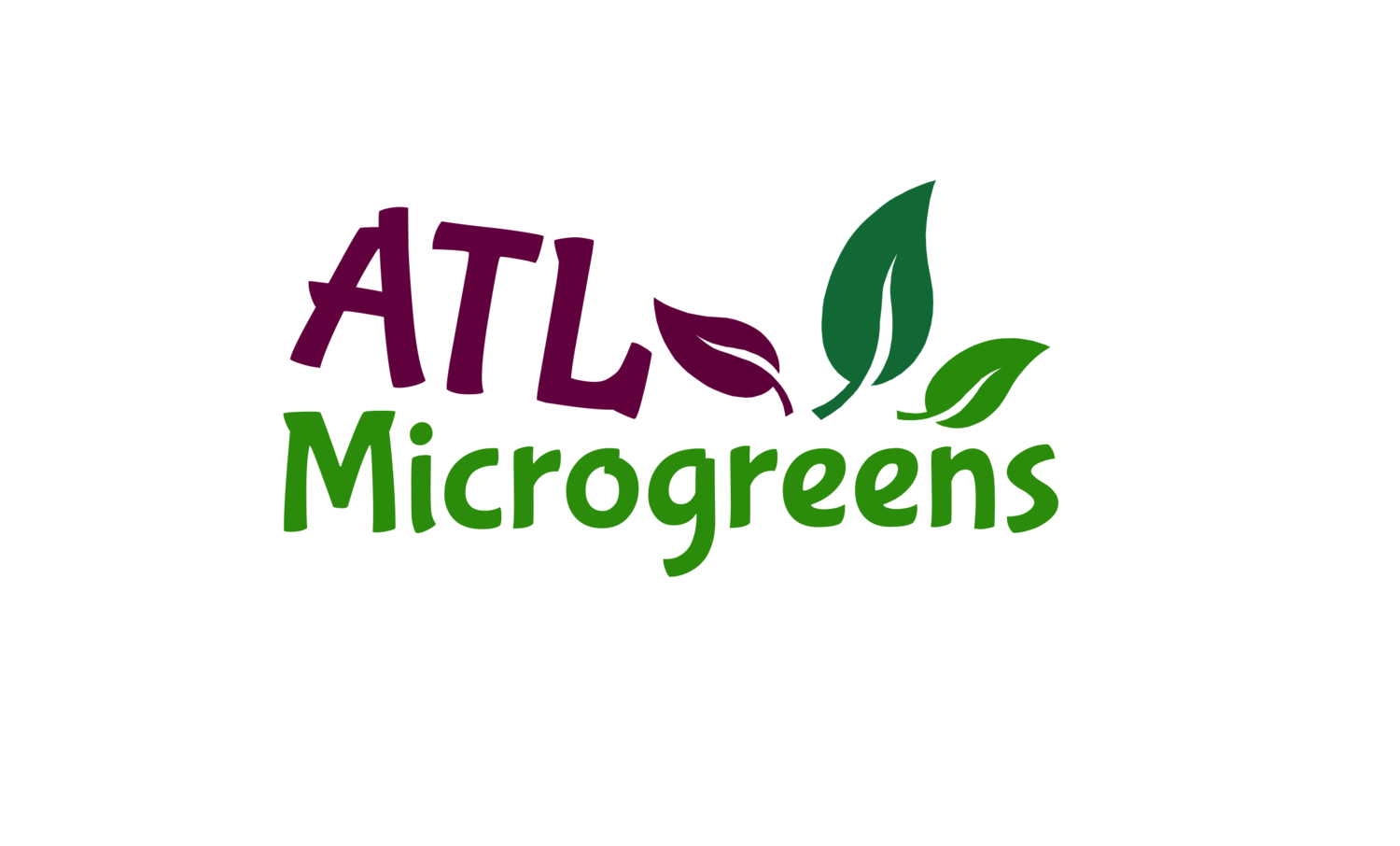Tiny but mighty!
Microgreens are young edible vegetable plants that fall somewhere between sprouts and baby greens. These are usually harvested after they form their first true leaves and sold in small packs. They have an intense aromatic flavor, concentrated nutrient content and come in a variety of colors and textures. At ATLmicrogreens we do not harvest them, preferring instead sell them in their growing trays to ensure they remain fresh for longer - up to a week for most, and two weeks for Peas if handle appropriately.
Types of micros
Microgreens can be grown from various seeds. Their taste can vary greatly depending on the variety.
The most popular varieties are produced using seeds from the following plant families (1 Source):
Brassicaceae family: Cauliflower, Broccoli, Cabbage, Watercress, Radish and Arugula
Asteraceae family: Lettuce, Endive, Chicory and Radicchio
Apiaceae family: Dill, Carrot, Fennel and Celery
Amaryllidaceae family: Garlic, Onion, Leek
Amaranthaceae family: Amaranth, Quinoa, Swiss Chard, Beet and Spinach
Cucurbitaceae family: Melon, Cucumber and Squash
Cereals such as rice, oats, wheat, corn and barley, as well as legumes like chickpeas, beans and lentils, are also sometimes grown into microgreens.
Nutrition
Microgreens are highly nutritious. They often contain larger amounts of vitamins, minerals and antioxidants than their more mature counterparts.
Microgreens are packed with nutrients.
While their nutrient contents vary slightly, most varieties tend to be rich in potassium, iron, zinc, magnesium and copper (2, 3 Trusted Source).
Microgreens are also a great source of beneficial plant compounds like antioxidants (4 Trusted Source).
What’s more, their nutrient content is concentrated, which means that they often contain higher vitamin, mineral and antioxidant levels than the same quantity of mature greens (4 Trusted Source).
In fact, research comparing microgreens to more mature greens reports that nutrient levels in microgreens can be up to nine times higher than those found in mature greens (5 Trusted Source).
Research also shows that they contain a wider variety of polyphenols and other antioxidants than their mature counterparts (6 Trusted Source).
One study measured vitamin and antioxidant concentrations in 25 commercially available microgreens. These levels were then compared to levels recorded in the USDA National Nutrient Database for mature leaves.
Although vitamin and antioxidant levels varied, levels measured in microgreens were up from 4 to 40 times higher than those recorded for more mature leaves by weight (4 Trusted Source).
That said, not all studies report similar results.
For instance, one study compared nutrient levels in sprouts, microgreens and fully grown amaranth crops. It noted that the fully grown crops often contained as much, if not more, nutrients than the microgreens (7 Trusted Source).
Therefore, although microgreens generally appear to contain higher nutrient levels than more mature plants, this may vary based on the species at hand.

